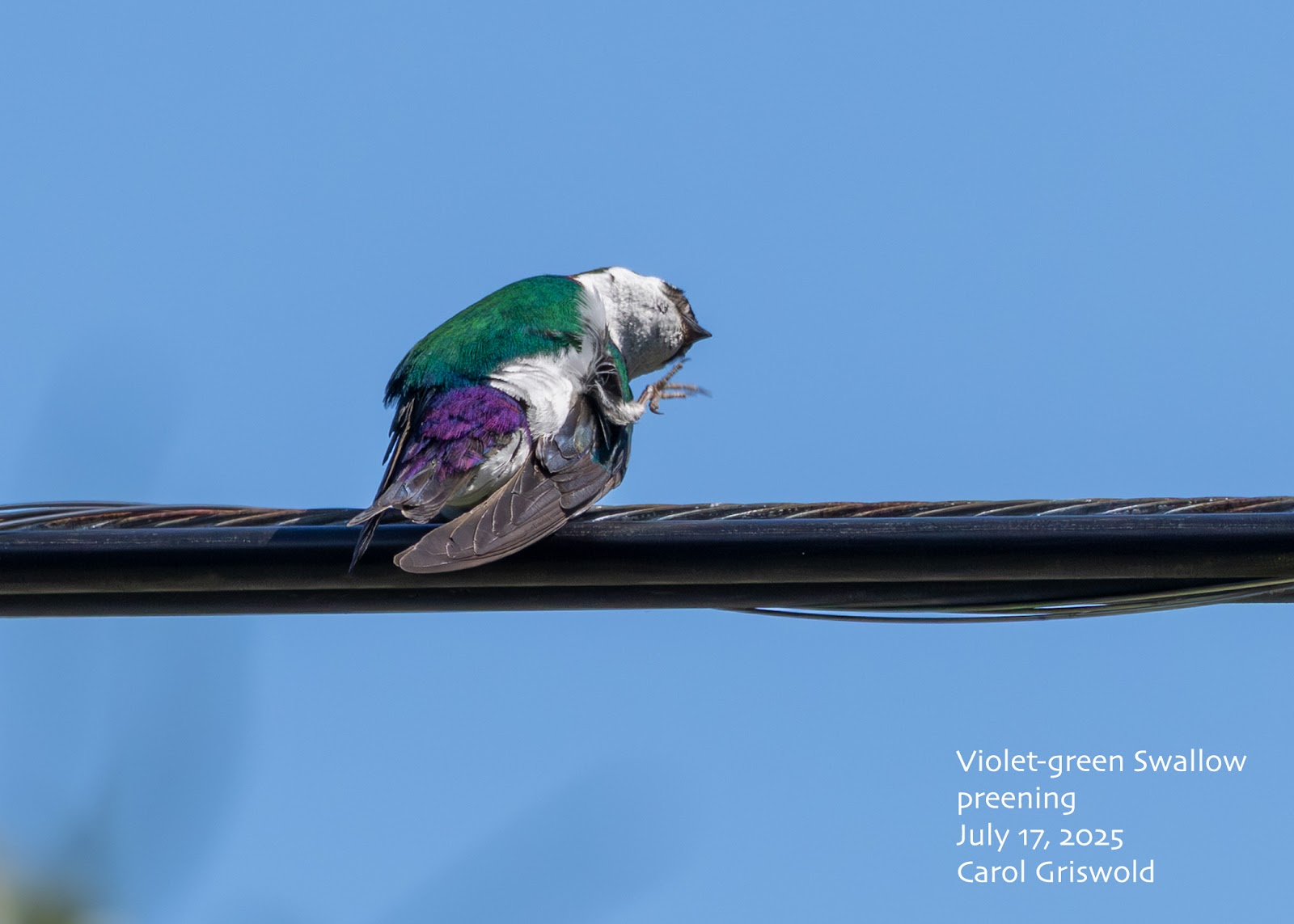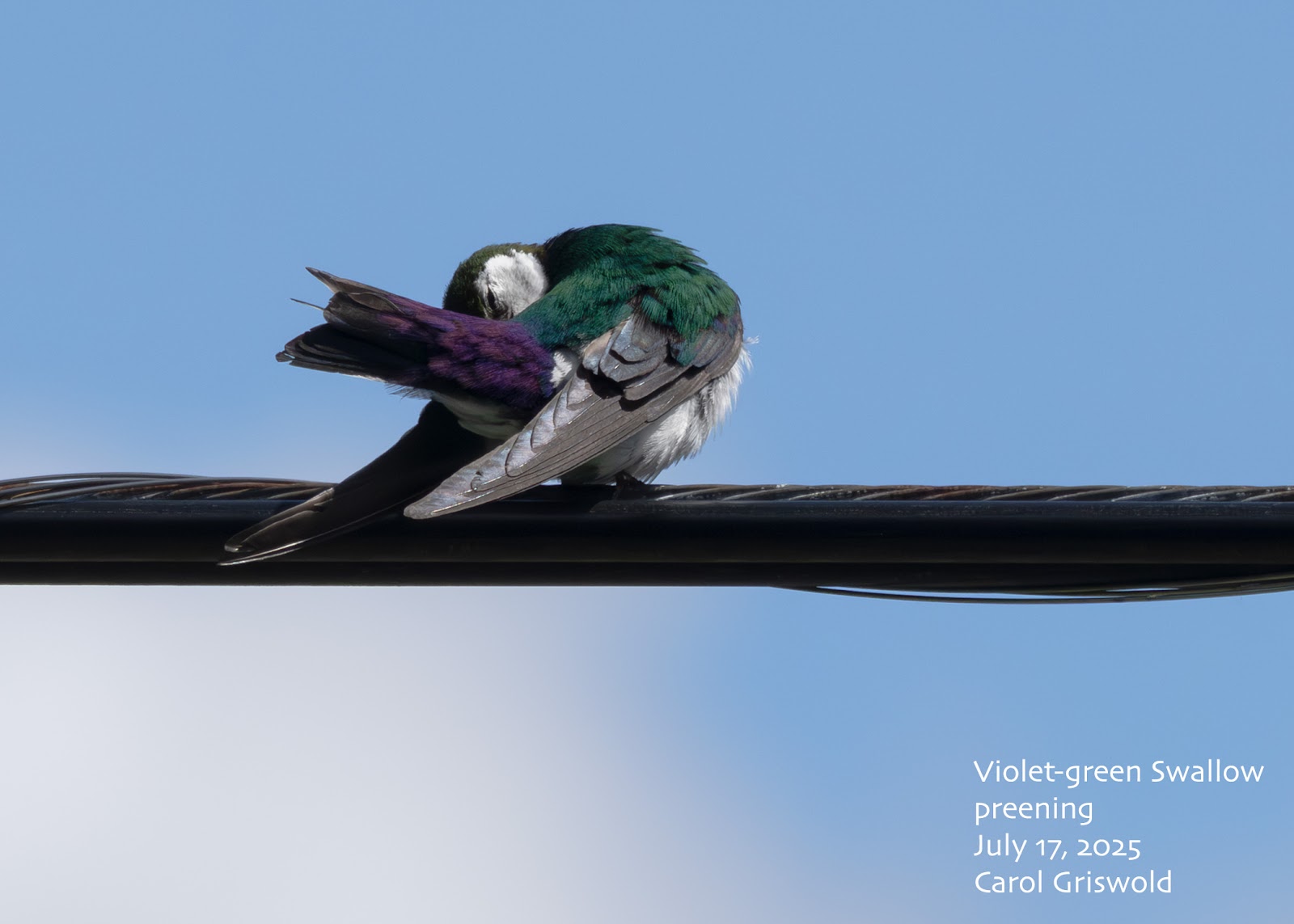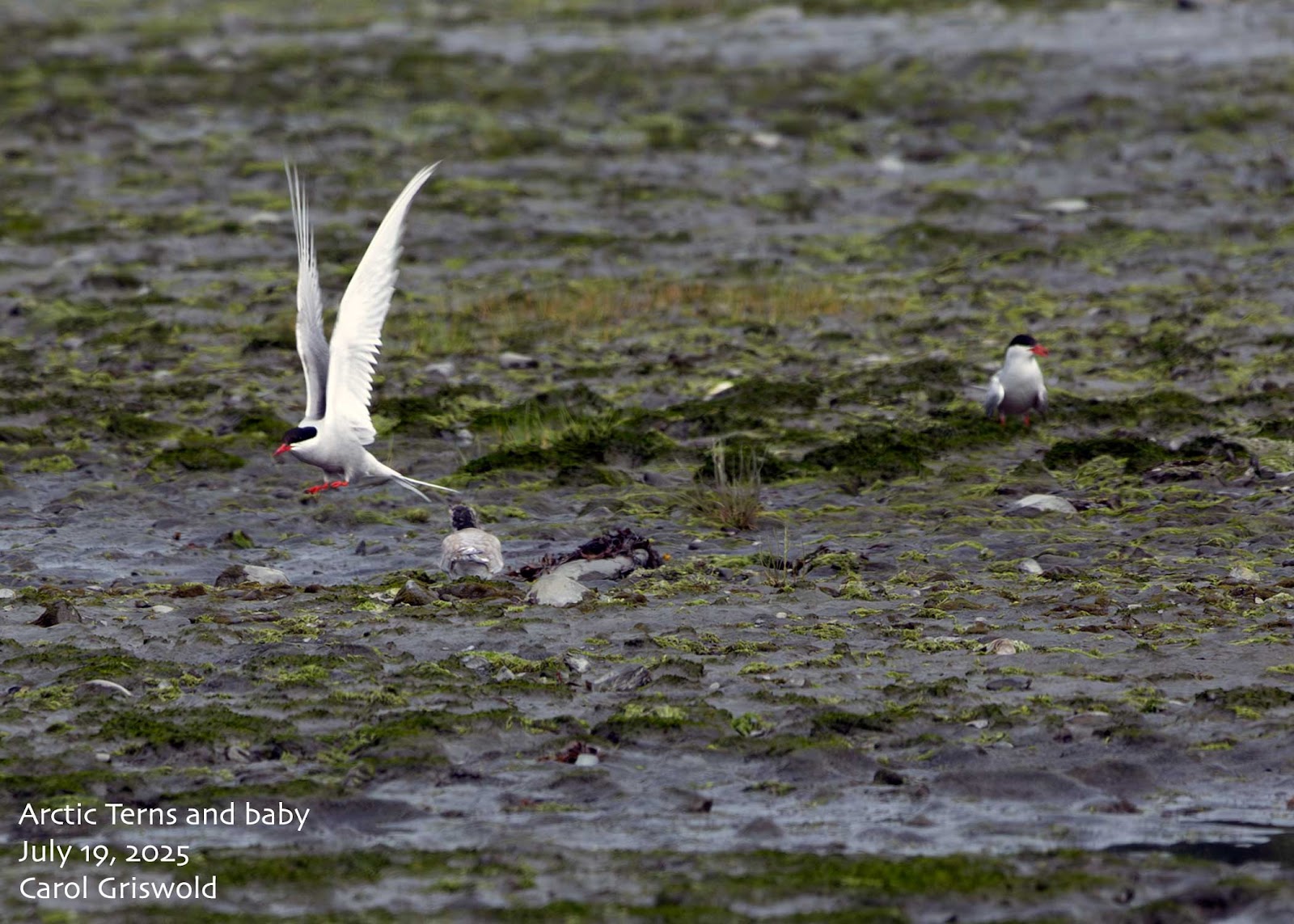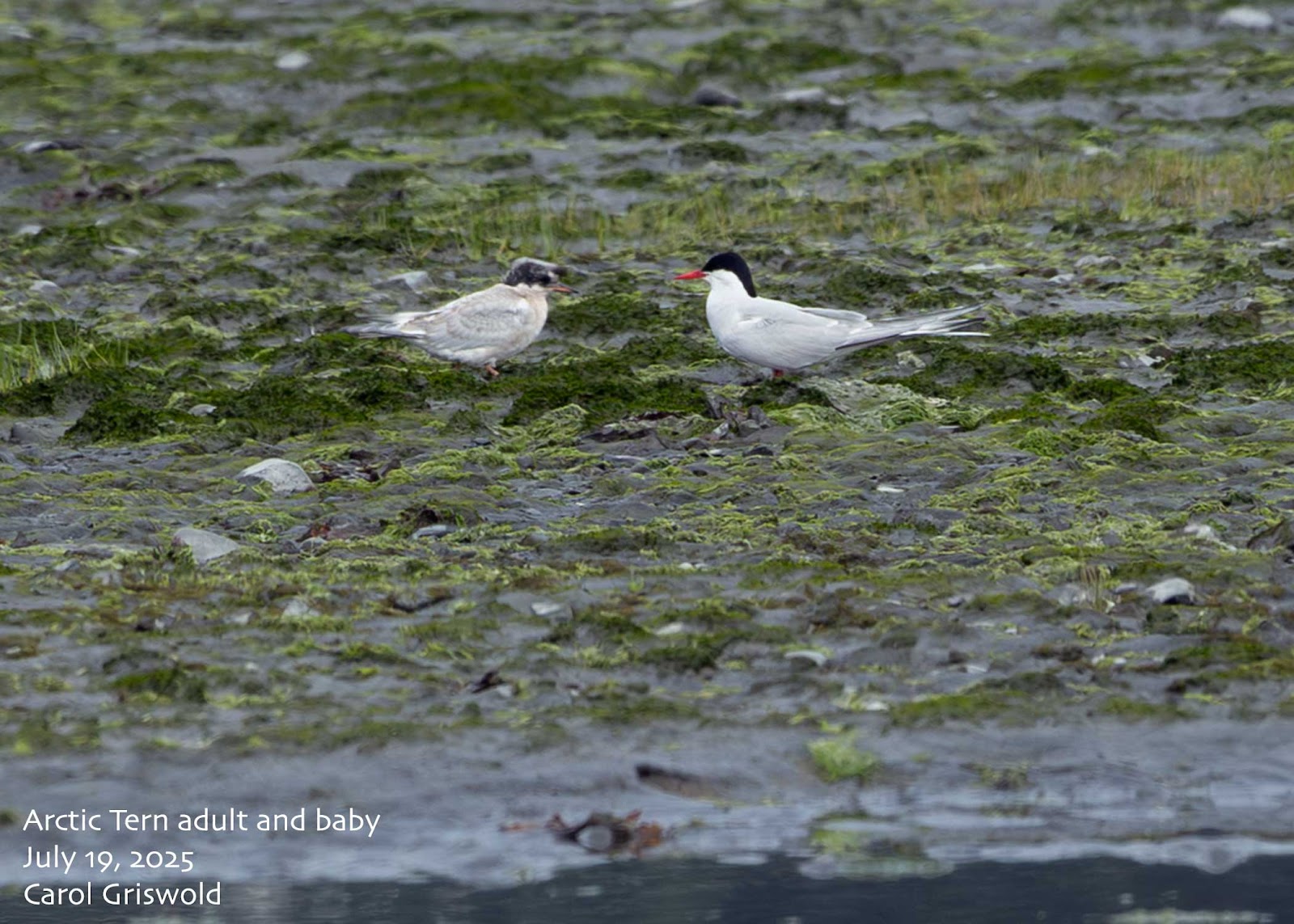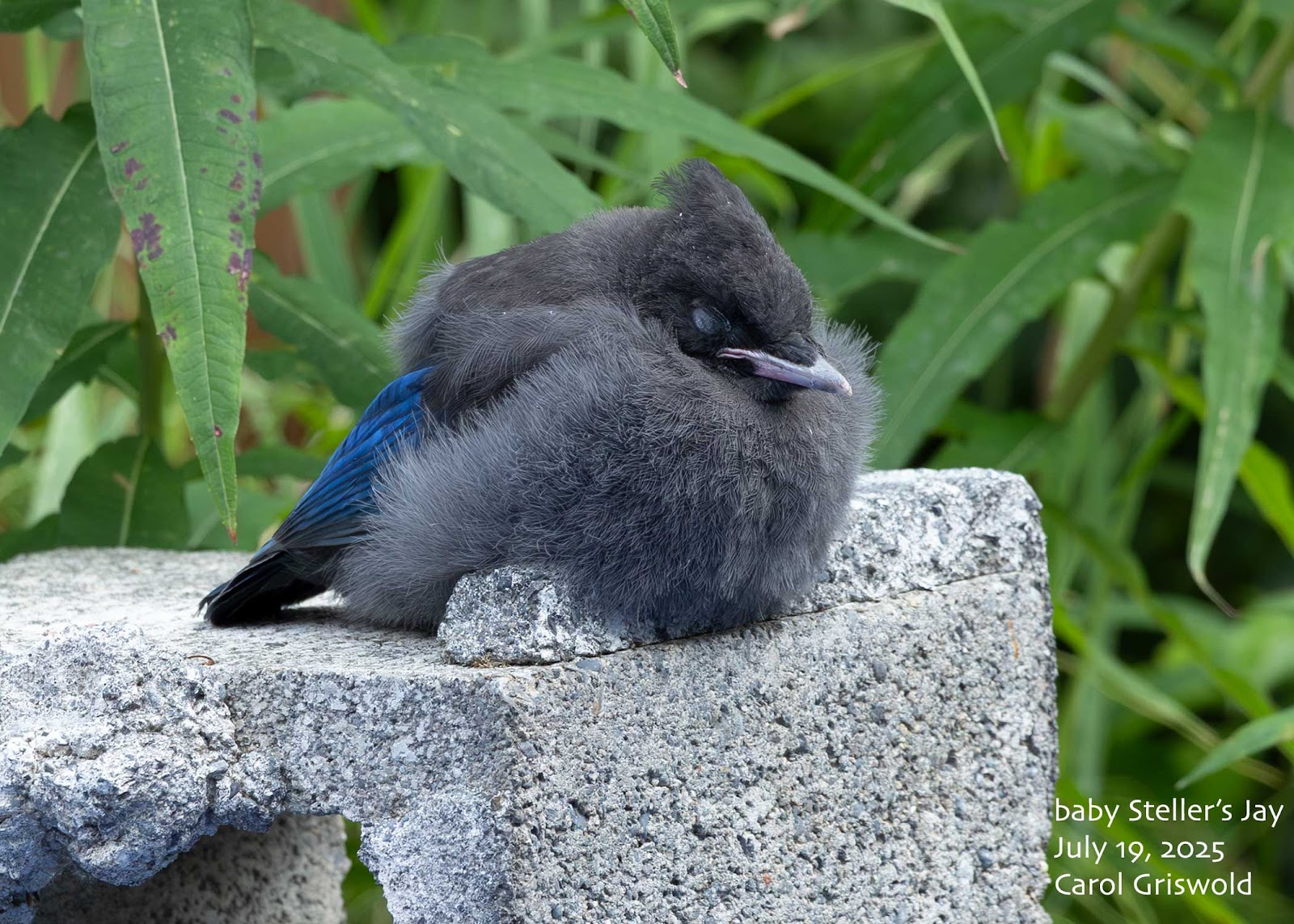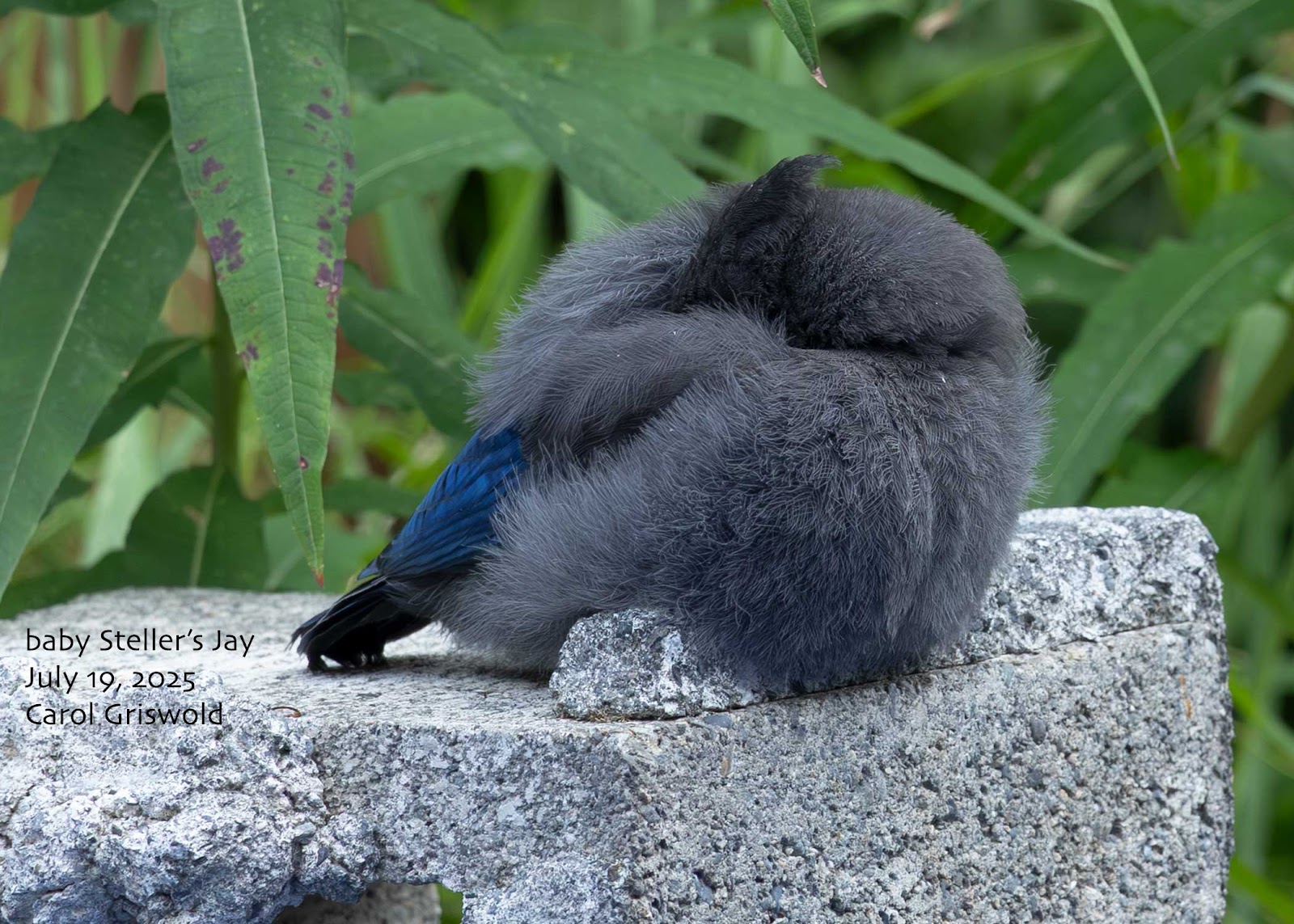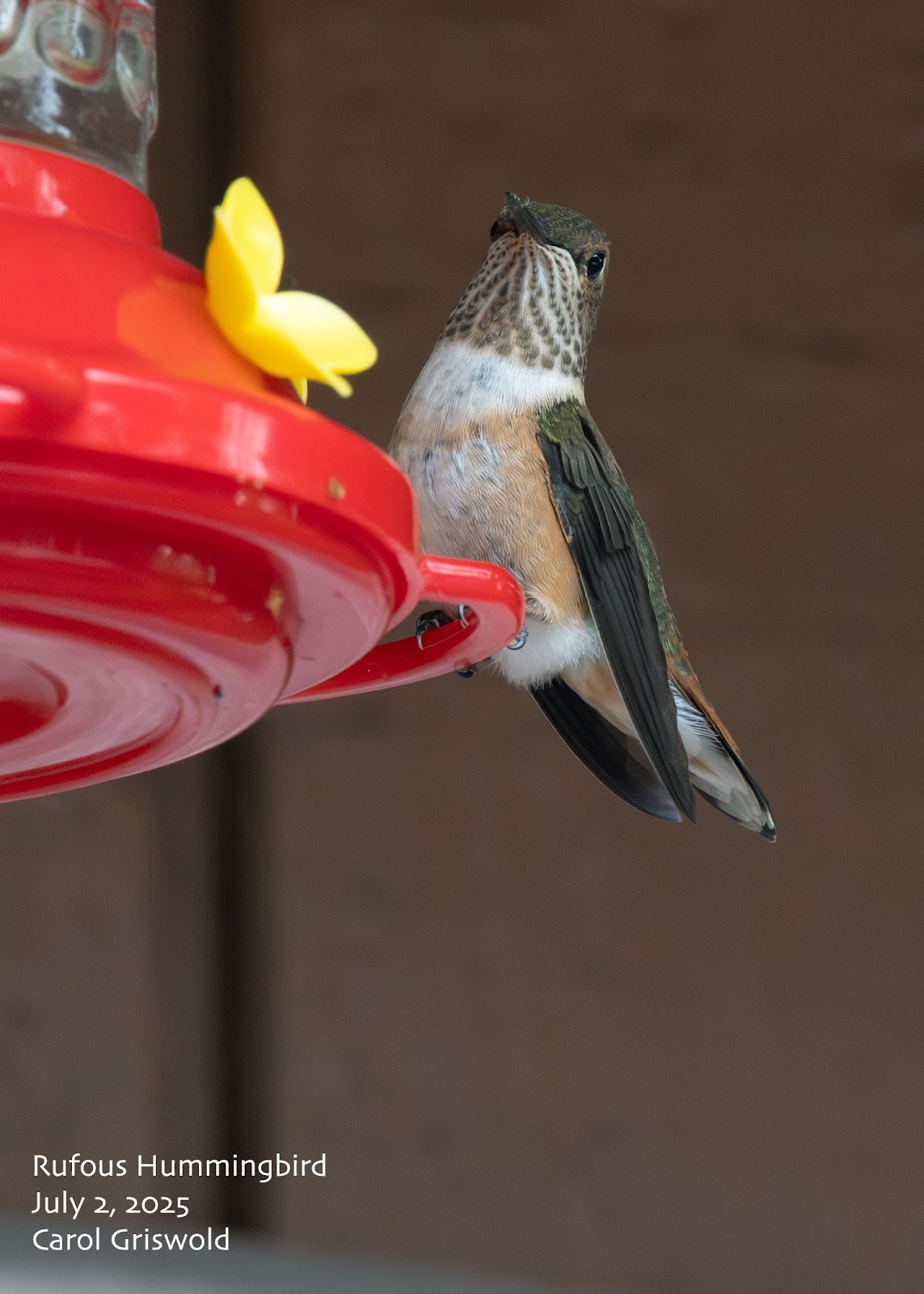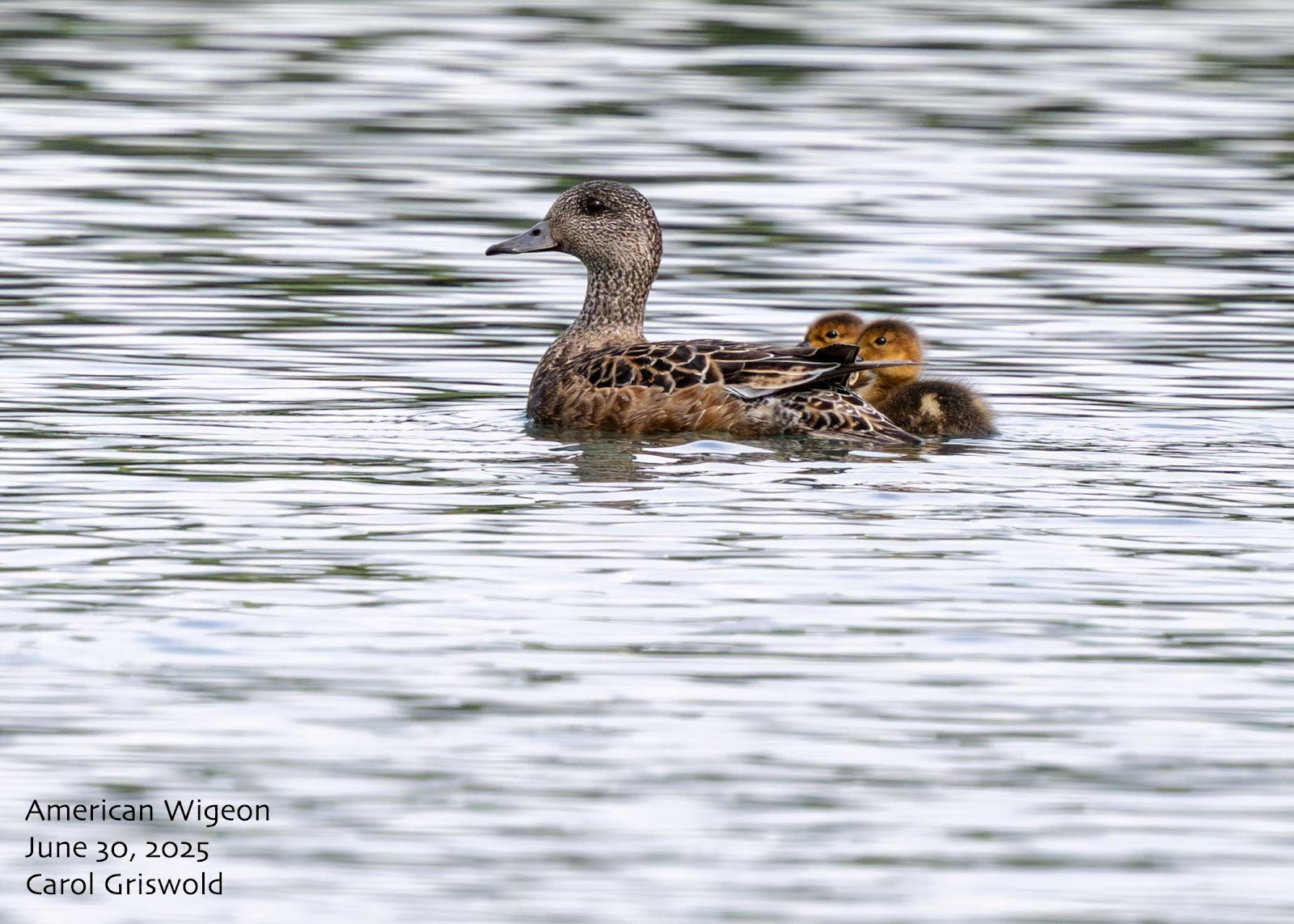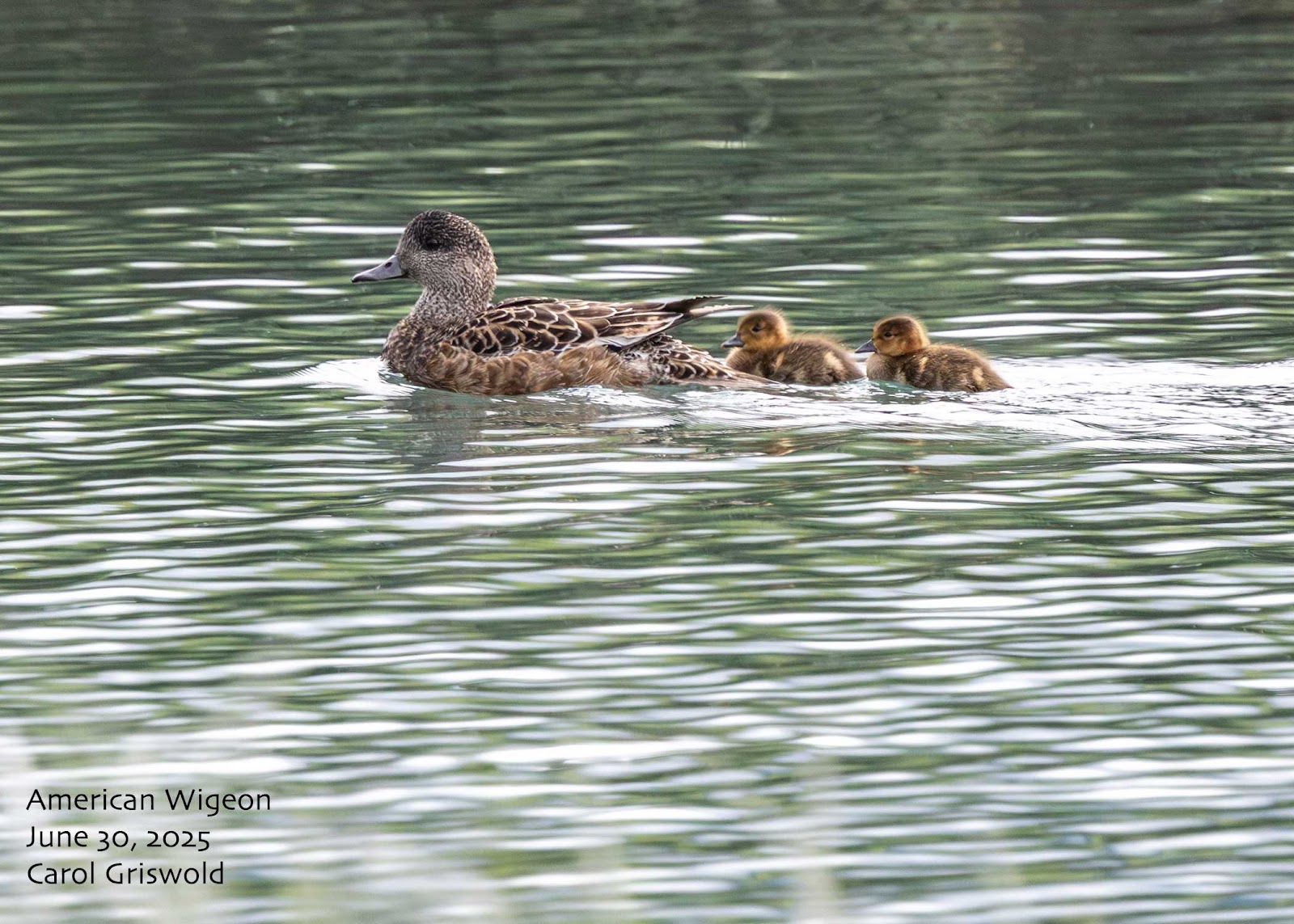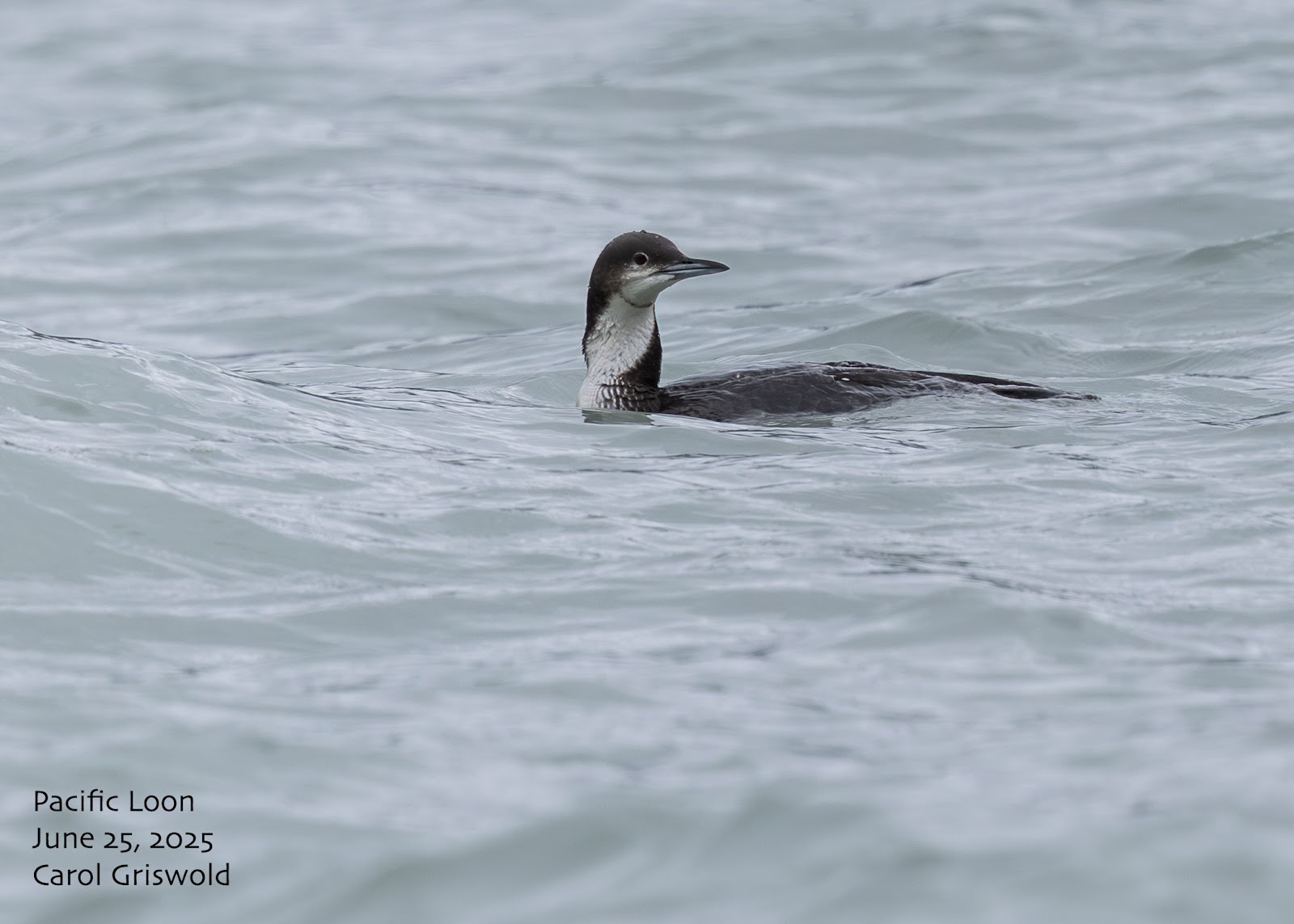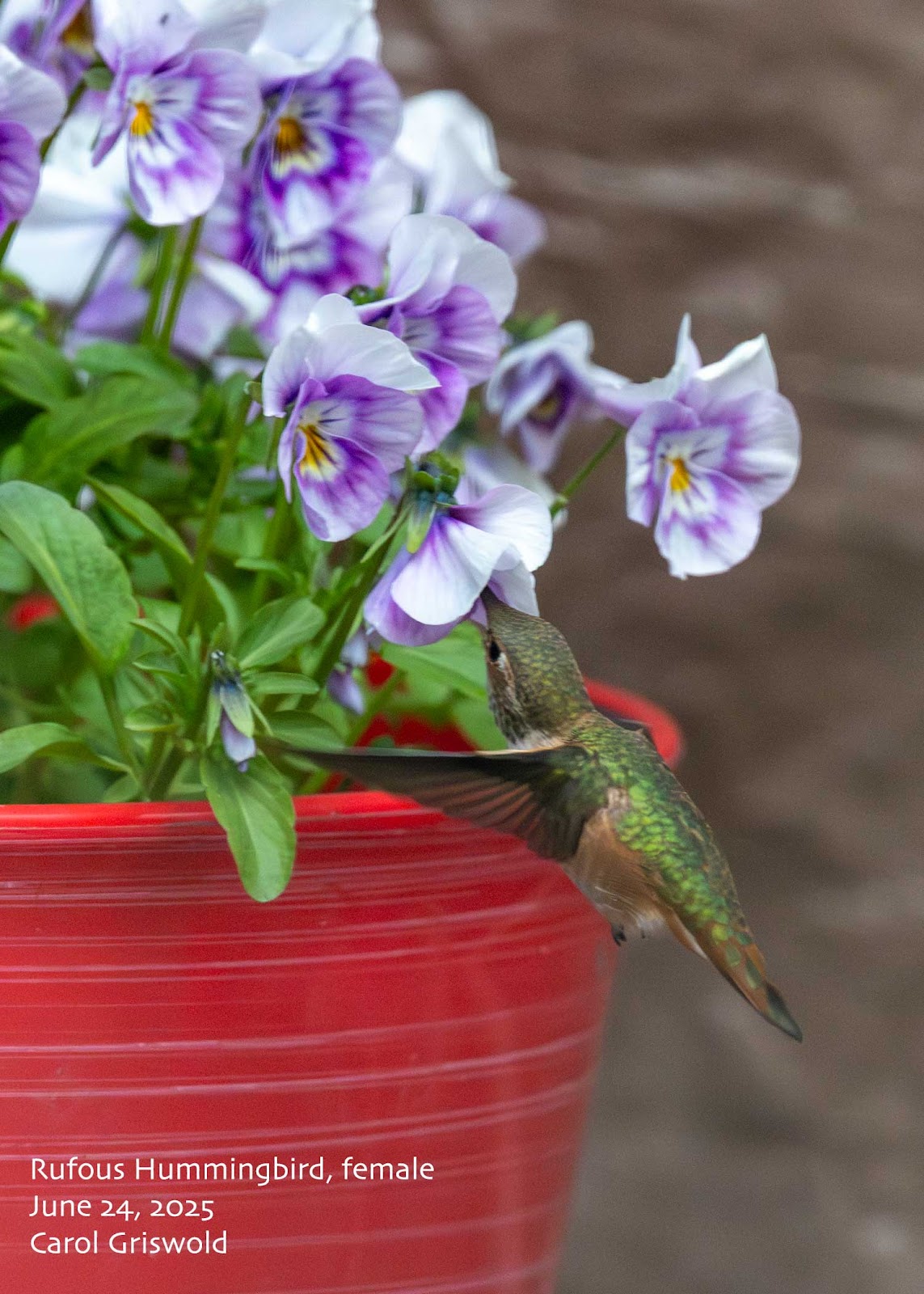Seward, Alaska
Sunrise 5:10 am, sunset 10:59 pm for a total day length of 17 hours and 49 minutes. Tomorrow will be 4 minutes and 7 seconds shorter.
Cloudy with temps continuing around 46-57º and calm. Warmer temps in the mid-60s and sunshine in the forecast for next week.
After saying farewell to my hummers on July 11, I almost took down the feeder. But at 6 pm on July 16, a RUFOUS HUMMINGBIRD hovered in front of my kitchen window looking at me as if to say, “I’m still here!” I immediately made a new batch of sugar solution. There it was the next morning at 9 am, sitting and sipping. That was the sweet finale; I haven’t seen any since.
“My” VIOLET-GREEN SWALLOWS are still using the nest box. They are about a week behind the other neighborhood Swallows. I enjoyed watching the gorgeous dad taking a little time for himself to preen and bask in the sunshine on July 17.
What appears to be a black and white bird when swooping above is truly eye-popping when illuminated from behind in the sun: brilliant green back, violet rump, iridescent blue on scapulars, white face with large, alert eyes, tiny black bill, and immaculate white front.
The babies should be fledging soon.
The ARCTIC TERNS have already left their nests and headed out to sea, all except three adults and one last baby who I only saw walking on the beach. It’s a late bloomer who no longer enjoys the protection of the colony to fight off predators. Two SHORT-BILLED GULLS remained nearby but I did not see any young.
I watched the five adults leap into action against first one adult BALD EAGLE then a second as the marauders flew low across the beach with a little snack in mind. The ferocious smaller birds dive-bombed the Eagles and loudly screamed bird profanities until they drove them off.
Then a GLAUCOUS-WINGED GULL flew in range and the defense also proved successful. What a treacherous time for the baby!
Were the Short-billed Gulls exhibiting altruistic behavior? I wonder why they remained, and joined in the defense like the Three Musketeers, “All for one and one for all!” I hope the little one will soon become a skilled aviator instead of a sitting target and start the long migration to Antarctica.
Also spotted, a small flock of peeps, including LEAST and SEMI-PALMATED SANDPIPERS, and two LESSER YELLOWLEGS. Otherwise, it was pretty quiet.
This afternoon, while walking up to the gate at Lowell Canyon Road, I held the Merlin app towards an unusual woodpecker sound I did not recognize. AMERICAN THREE-TOED WOODPECKERS! I saw a flutter through the dense cottonwood leaves and heard several babies vocalizing from both sides of the road, but was unable to see them. On my way back 15 minutes later, I heard nothing.
Back home, I found two adorable baby STELLER JAYS snoozing on the back deck, blue-gray balls of downy feathers with bright blue wing and tail feathers and a tiny dark crest. They still have their gaping baby bills. O, they were so tired! They hardly stirred when I suddenly appeared, then quickly dozed off again. It won’t be long before they become alert, perky rascals.
Happy Birding!
Carol Griswold
Seward Sporadic Bird Report Reporter

